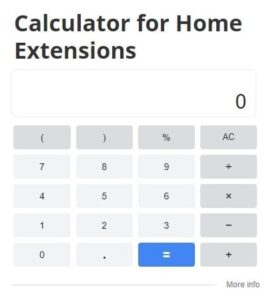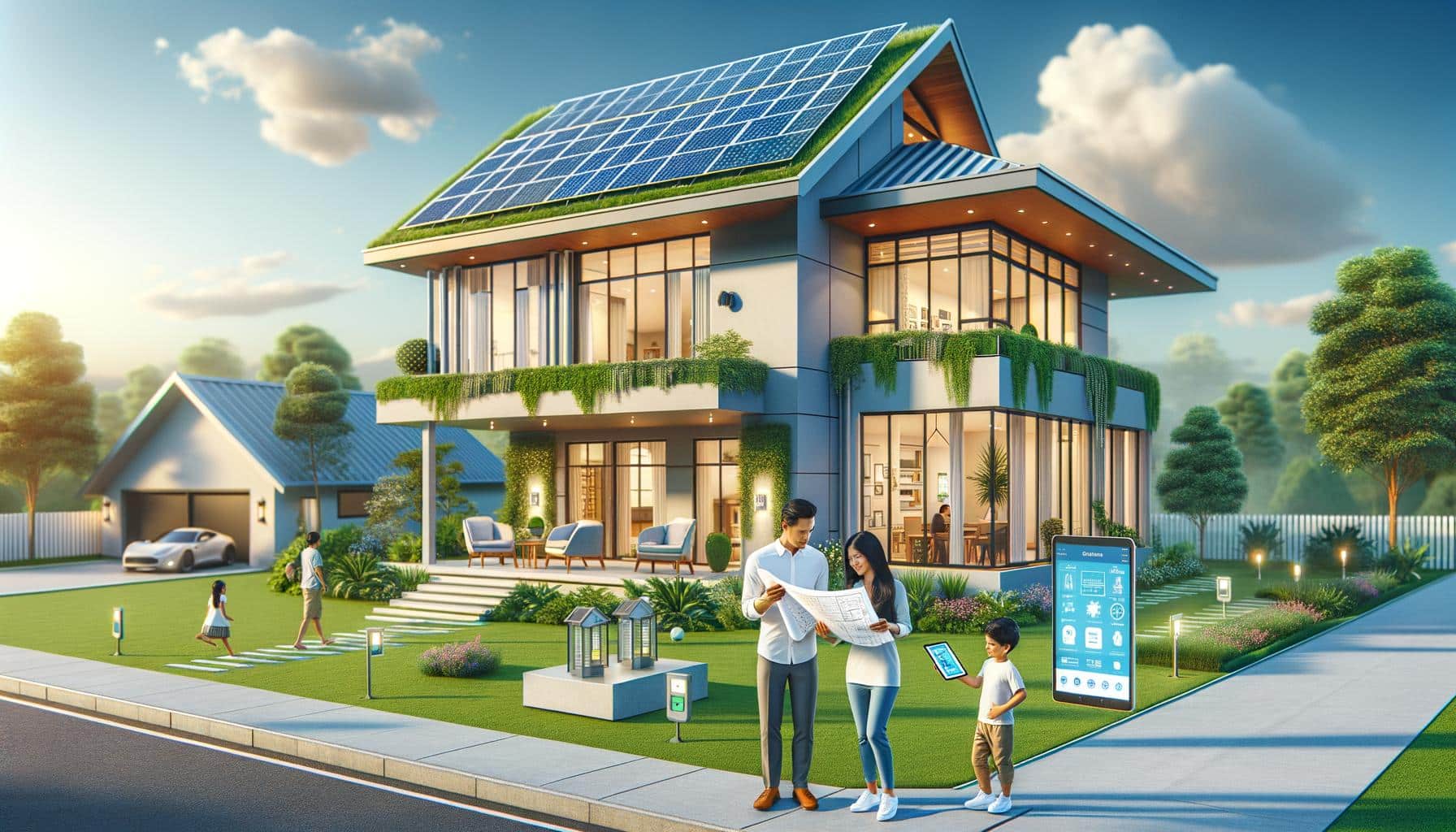
At Home Owners Association, we understand the importance of energy-efficient home improvements. These upgrades not only reduce your carbon footprint but also lead to significant savings on utility bills.
In this blog post, we’ll explore practical ways to make your home more energy-efficient, from exterior upgrades to smart technology and appliance choices. Get ready to transform your living space into an eco-friendly haven while keeping more money in your pocket.
How to Upgrade Your Home’s Exterior for Energy Efficiency
Insulation: Your Primary Defence Against Energy Loss
Proper insulation maintains a comfortable temperature in your home while reducing energy consumption. Upgrading insulation can cut average home heating and cooling costs by around 30%, and generally pays for itself within 3 to 5 years through reduced energy bills. You should focus on insulating walls and attics, as these areas often allow significant heat loss. Choose from materials like fibreglass, cellulose, or spray foam insulation based on your specific needs and budget.
Windows and Doors: Gateways to Energy Savings
Energy-efficient windows and doors can dramatically impact your home’s energy use. According to YourHome (an Australian government guide to sustainable homes), up to 87% of a home’s heating energy can be gained and up to 40% lost through windows. When selecting new windows and doors, look for products with low U-values and high R-values, which indicate better insulation properties. Installing well-insulated exterior doors can prevent draughts and improve overall energy performance.
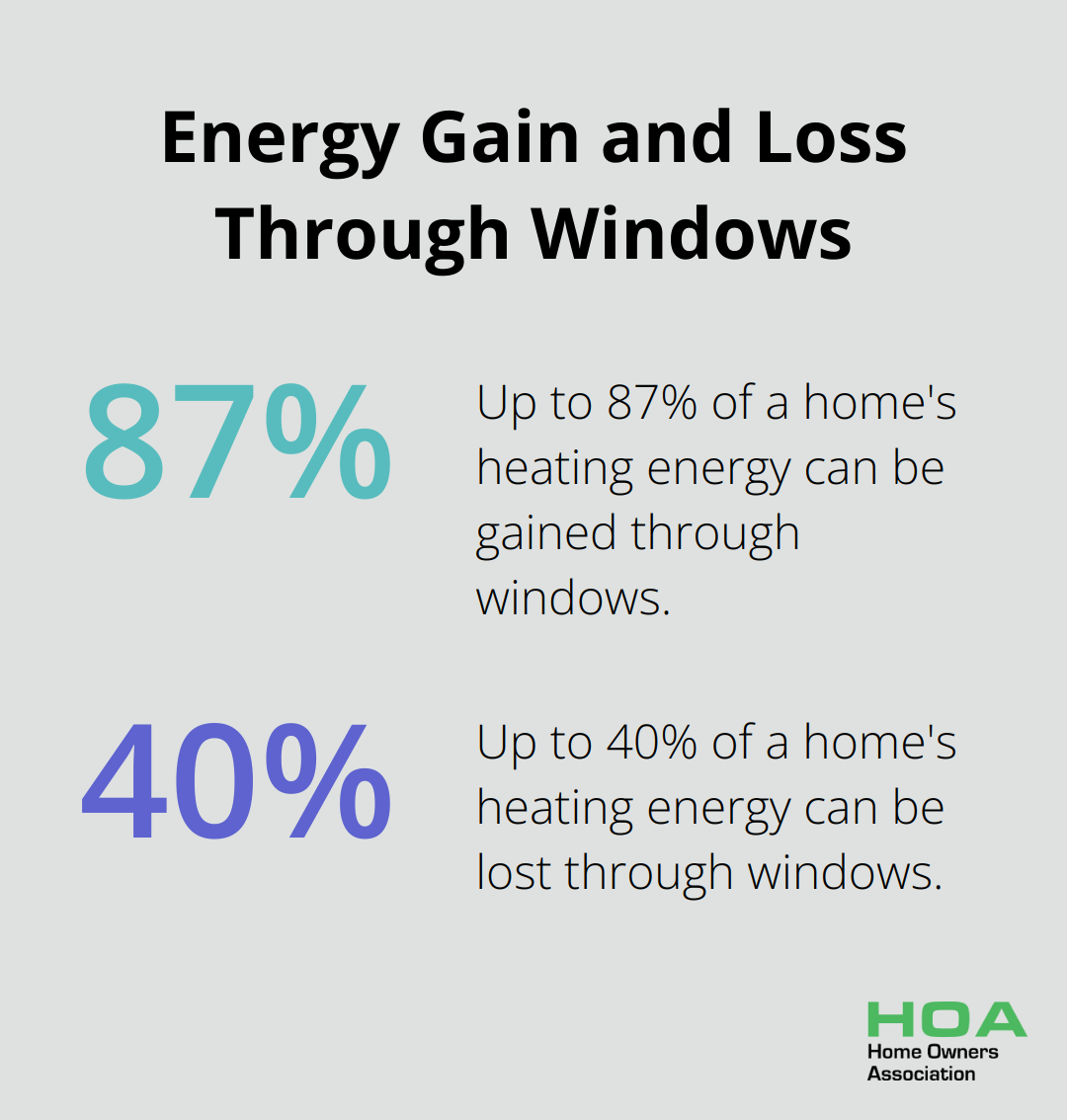
Weatherstripping and Air Leak Prevention
Small gaps and cracks lead to substantial energy loss. You can make a noticeable difference in your energy bills by weatherstripping around doors and windows and sealing air leaks throughout your home. Pay attention to areas where different building materials meet, such as where the foundation meets the walls or where the chimney passes through the roof.
Solar Panels: Harnessing the Sun’s Power
Solar photovoltaic (PV) systems offer excellent long-term energy savings. Solar panels allow you to generate your own electricity and potentially earn money by feeding excess power back into the grid. If solar panels don’t suit your home, try a cool roof. These roofs use reflective materials to decrease heat absorption, keeping your home cooler and reducing air conditioning costs.
The Value of Energy-Efficient Upgrades
Implementing these exterior upgrades doesn’t just improve your home’s energy efficiency; it also increases its value. While the initial investment might seem substantial, the long-term savings benefit both your wallet and the environment. Homeowners can claim tax credits for qualifying exterior windows, skylights, and doors, further offsetting the cost of these improvements.
As we move from exterior improvements to interior solutions, let’s explore how smart home technology can further enhance your home’s energy efficiency.
Smart Home Tech for Energy Savings
The Power of Smart Thermostats
Smart thermostats revolutionise home energy management. These devices learn your preferences and routines, then automatically adjust temperature settings for optimal comfort and efficiency. Heating and cooling accounts for about 40% of the energy use in an average Australian home. Improving the thermal performance of Australian homes is vital to reducing energy consumption and costs. Smart thermostats that earn the ENERGY STAR label have been independently certified to deliver energy savings.
Intelligent Power Management
Smart power strips and outlets combat energy waste effectively. These devices detect when appliances enter standby mode and cut power completely, eliminating phantom energy draw. The Australian government estimates that standby power can account for up to 10% of household electricity use. Smart power management implementation could save you up to $100 per year on your electricity bill.
Lighting the Way to Efficiency
Smart lighting systems offer convenience and energy savings. You can control your lights remotely, set schedules, and adjust brightness levels. LED bulbs use about 75% less energy than halogen light bulbs and last 5 to 10 times longer, greatly reducing replacement costs and the number of light bulbs ending up in landfills. The Australian Department of Industry, Science, Energy and Resources reports that switching to LED lighting can save the average household about $650 over 10 years.
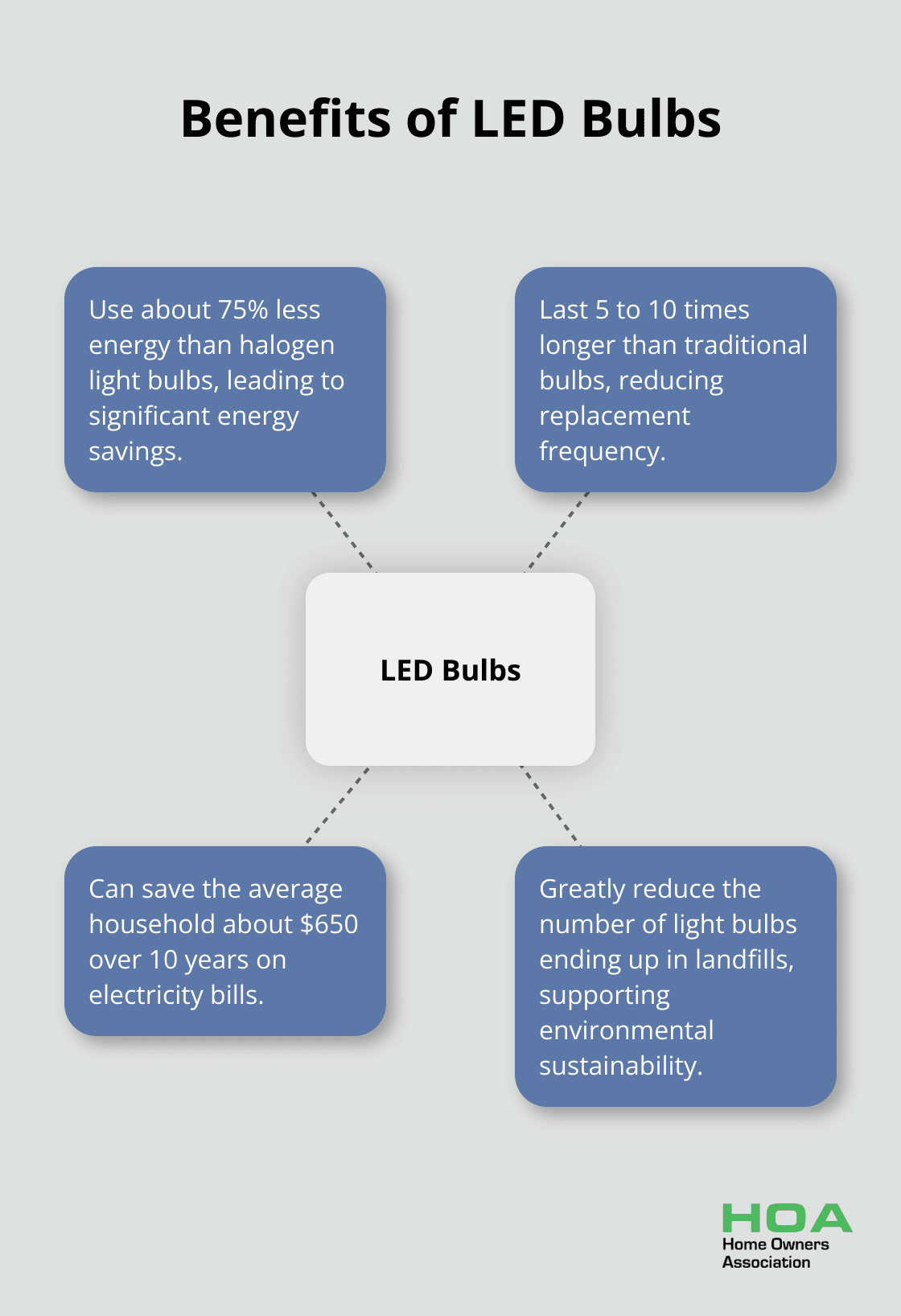
Monitoring for Maximum Savings
Energy monitoring devices provide real-time data on your home’s energy consumption. This information helps you identify energy hogs and adjust your usage habits. A study by the American Council for an Energy-Efficient Economy found that households using energy monitors saved an average of 12% on their energy bills. While Australian-specific data is limited, similar savings are likely achievable here.
Integration and Compatibility
To maximise the benefits of smart home technology, you should choose high-quality, compatible devices. This ensures seamless integration and optimal performance across your smart home ecosystem. Many smart home platforms (such as Google Home or Apple HomeKit) offer compatibility with a wide range of devices, allowing you to create a cohesive and efficient smart home system.
As we explore the potential of smart home technology for energy savings, it’s important to consider how these innovations work in tandem with energy-efficient appliances and systems. Let’s now turn our attention to the role of high-performance appliances in creating an energy-efficient home.
Maximising Efficiency with Modern Appliances
The Impact of Energy-Efficient Appliances
Energy-efficient appliances and systems reduce energy consumption and costs in your home. The Australian government’s Equipment Energy Efficiency (E3) program estimates that appliance standards have saved households between $140 and $220 annually (contributing to a collective saving of $9.4 to $18.9 billion in the economy).
Advanced HVAC Systems for Home Comfort
Heating, ventilation, and air conditioning (HVAC) systems often consume the most energy in Australian homes. New, energy-efficient models can significantly reduce your energy bills. Look for systems with high Seasonal Energy Efficiency Ratio (SEER) ratings. The higher the SEER rating, the more efficient the system. An upgrade from a 10 SEER to a 16 SEER system can reduce your cooling costs by up to 40%.
Heat pumps offer an efficient alternative to traditional HVAC systems for both heating and cooling, especially in Australia’s varied climate. The ACT Government reports that hot water heat pumps can reduce running costs by about a third compared to standard gas systems (with payback periods of 4 to 6 years).
The Advantage of ENERGY STAR Certification
ENERGY STAR certified products meet strict energy efficiency guidelines set by the Australian government. You can learn more about energy-efficiency ratings for appliances and compare specific models using the Energy Rating website and Energy Rating Calculator.
Induction cooktops offer an excellent choice for energy-efficient kitchens. They’re approximately three times more energy-efficient than gas cooktops, reduce both energy bills and emissions, and provide precise temperature control and faster cooking times.
Efficient Water Heating Solutions
Water heating accounts for about 25% of energy use in Australian homes. Tankless water heaters can be up to 30% more efficient than traditional storage tank water heaters. They heat water on demand, which eliminates standby energy losses associated with storage tanks.
Solar hot water systems excel in sunny Australia. These systems can reduce your water heating costs by 50-80%, according to Sustainability Victoria. The long-term savings and environmental benefits make them a worthwhile consideration, despite the higher initial investment.
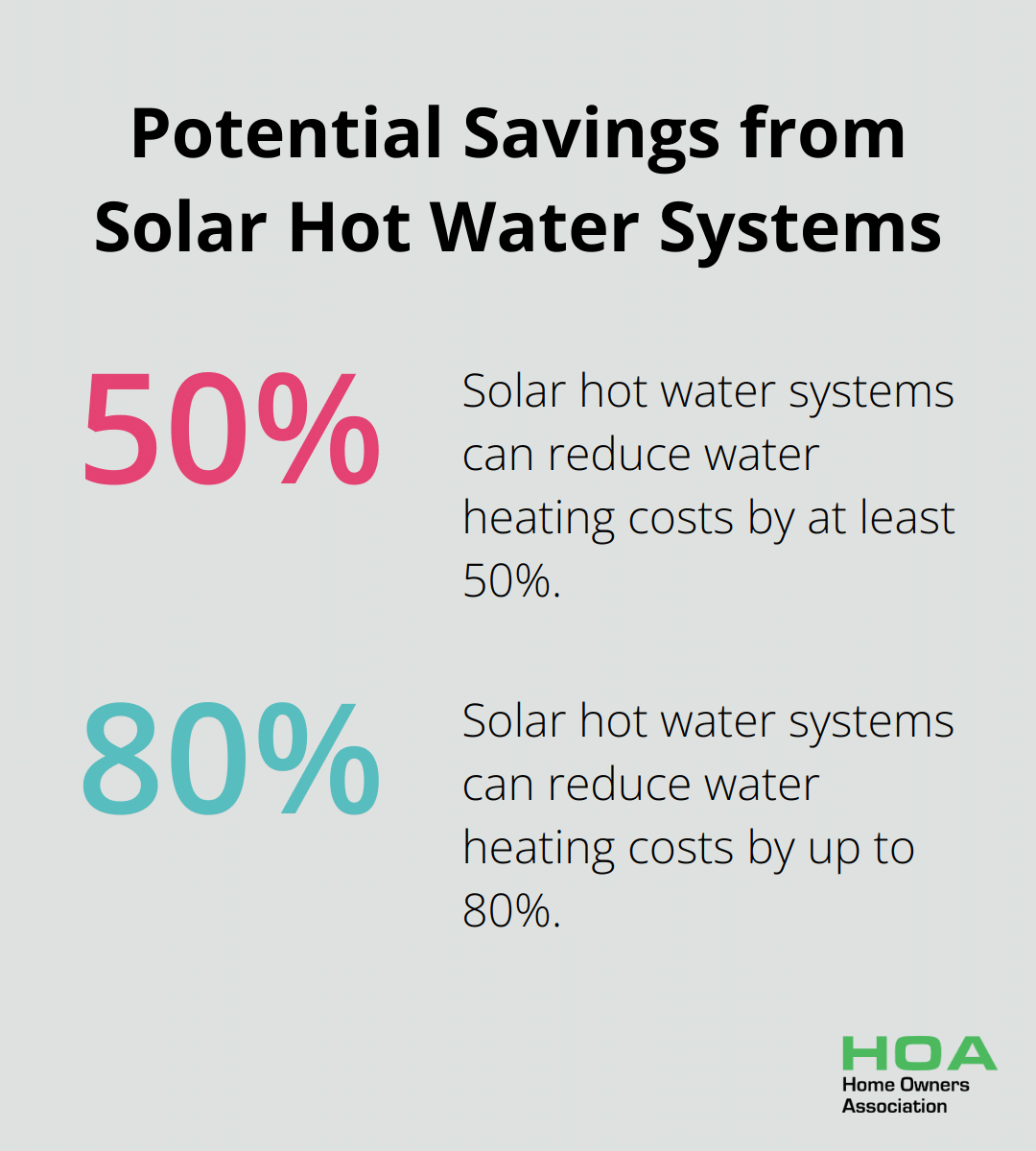
LED Technology for Efficient Lighting
Lighting typically accounts for about 10% of a home’s electricity use. LED bulbs can last for at least 25,000 hours, compared to 6–8,000 hours for a CFL and 1–2000 hours for an incandescent lamp. The Australian Department of Industry, Science, Energy and Resources reports that switching to LED lighting can save the average household about $650 over 10 years.
When you choose LEDs, pay attention to the lumens (brightness) and colour temperature to ensure you get the right light for each space. Smart LED bulbs integrate with your home automation system for even greater control and efficiency.
Final Thoughts
Energy-efficient home improvements offer a powerful way to reduce your carbon footprint and save money on utility bills. These changes can significantly impact your energy consumption and comfort, from upgrading your home’s exterior to implementing smart home technology and investing in high-performance appliances. The long-term benefits of energy conservation extend beyond immediate cost savings, as you contribute to a more sustainable future and potentially increase your property value.
At Home Owners Association, we support Melbourne homeowners in their energy efficiency journeys. Our members enjoy access to trade pricing and discounts on materials for energy-efficient home improvements (as well as expert advice to ensure projects meet the highest standards). We provide personalised guidance and educational resources to help you make informed decisions about energy-efficient upgrades for your home.
Energy-efficient homes are increasingly sought after in the real estate market, making these improvements a wise investment for the future. You not only benefit your household but also contribute to a more sustainable Melbourne when you take steps to improve your home’s energy efficiency. Creating an energy-efficient home is an achievable and rewarding goal for any homeowner with the right approach and support.





